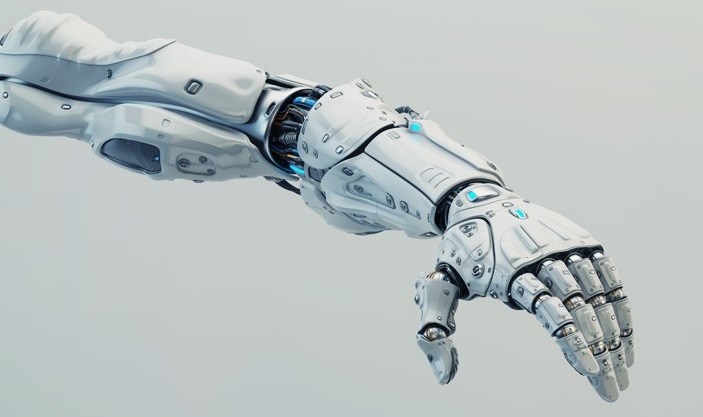
Although several reports have described advances in intelligent robotic systems and brain-machine interfaces (BMI) that have helped restore functionality and independence to individuals living with sensorimotor challenges and deficits; fewer studies have focused on tasks requiring bimanual coordination and fine manipulation given the technical complexity of controlling multiple degrees of freedom (DOF) across multiple limbs in a coordinated way through a user input.
To address this challenge, a recent study published in Frontiers in Neurorobotics describes a collaborative shared control strategy to manipulate and coordinate two Modular Prosthetic Limbs (MPL) for performing a bimanual self-feeding task.
The study was conducted by a multidisciplinary team of researchers led by Dr. D. Handelman of the Department of Research and Exploratory Development, Johns Hopkins University Applied Physics Laboratory, Laurel, MD. USA.
A human participant with microelectrode arrays in sensorimotor brain regions provided commands to both MPLs to perform the self-feeding task, which included bimanual cutting.
Motor commands were decoded from bilateral neural signals to control up to two DOFs on each MPL at a time.
The shared control strategy enabled the participant to map his four-DOF control inputs, two per hand, to as many as 12 DOFs for specifying robot end effector position and orientation.
Using neurally-driven shared control, the participant successfully and simultaneously controlled movements of both robotic limbs to cut and eat food in a complex bimanual self-feeding task.
The authors conclude that their demonstration of bimanual robotic system control via a brain-machine interface (BMI) in collaboration with intelligent robot behavior has major implications for restoring complex movement behaviors and re-enabling activities of daily living (ADL) for those living with sensorimotor deficits like spinal cord injured patients.
Click here to learn more.
https://www.frontiersin.org/articles/10.3389/fnbot.2022.918001/full
Source: https://www.frontiersin.org/articles/10.3389/fnbot.2022.918001/full
DATELINEHEALTH AFRICA INC., is a digital publisher for informational and educational purposes and does not offer personal medical care and advice. If you have a medical problem needing routine or emergency attention, call your doctor or local emergency services immediately, or visit the nearest emergency room or the nearest hospital. You should consult your professional healthcare provider before starting any nutrition, diet, exercise, fitness, medical or wellness program mentioned or referenced in the DatelinehealthAfrica website. Click here for more disclaimer notice.